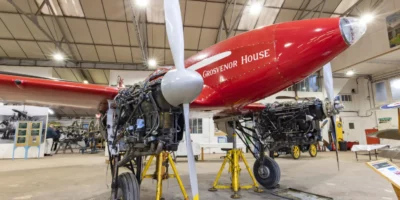Aviation regulations are meant to enhance safety – but sometimes they do the opposite. A recent flight to Elkhart, Indiana, provides an example. It was a dreary, rainy day with a 700ft ceiling and east wind at 10kt gusting to 17. I was in the right seat of a Cessna Citation checking out a highly experienced corporate pilot who was new to this aeroplane type.
We were aware before we started the trip that a Notam had been issued for construction on Runway 9 at Elkhart and that it might not be available.
The other pilot called the tower controller at Elkhart and was told that construction had been cancelled for the day due to rain and Runway 9 would be clear of people and equipment at our scheduled arrival time.
Our flight was uneventful until we got within 50 miles, and the automated weather at Elkhart (KEKM) confirmed Runway 9 at 5,500ft was our best choice. I checked in with South Bend Approach and asked for an RNAV approach (LNAV plus V) to Runway 9 – and that’s when things started to go awry.
The approach controller said that approach was unavailable because the lights on Runway 9 were out due to construction and the airport was operating under instrument flight rules.
I let him know that we’d spoken with the tower controller and had been assured that Runway 9 was available, but the approach controller was unmoved.
“I can’t clear you for an approach in IFR conditions knowing that the runway lights are out of service,” he said. “I can clear you for an RNAV approach to Runway 36.”
I told him we could make the approach and landing on Runway 9 ‘at our own risk’, but those sometimes magical words were rejected out of hand.
“We didn’t like the idea of declaring an emergency because there simply wasn’t one. Doing so, and forcing ATC’s hand, felt like an abuse of a pilot’s emergency authority”
Runway 36 – the one being offered – was 4,001ft long, wet, and cursed by a direct crosswind. A 4,001ft runway is usually more than enough for a Citation M2, but today it was soaked, and cursed with a gusty crosswind.
I entered the landing data for Runway 36 into the aeroplane’s flight management system and it let us know the aeroplane would require 3,500ft to touch down and stop. That meant we’d have to touch down no more than 500ft from the runway threshold and brake aggressively to keep it on the pavement – and that assumed this new-to-the-citation pilot’s technique was flawless, and that the aeroplane’s anti-skid braking system worked perfectly.
The other pilot and I discussed our options and none filled us with joy:
- We could attempt a short-field landing on R36 and go around if the aircraft didn’t touch down before the 500ft runway mark
- We could make an approach to R36 and then circle to land on R9
- We could declare an emergency and use that authority to fly an approach to R9
- Or we could divert to South Bend, Indiana, about 32 road miles away.
I didn’t like option one. This pilot was new to the aeroplane, and this was the strongest crosswind he’d encountered during his brief experience with it. A short-field landing on Runway 36 was out.
The other pilot didn’t like option two. A circling approach with a low ceiling and moderate rain at an unfamiliar airport in a heavily loaded aeroplane seemed a lot to ask. Lots of aviation accidents have happened during circling approaches, and the pilot had never performed one in this aircraft. The circling approach was out.
Neither of us liked the idea of declaring an emergency because there simply wasn’t one. Doing so, and forcing ATC’s hand, felt like an abuse of a pilot’s emergency authority. We simply wouldn’t do it.
We knew our passengers wouldn’t enjoy diverting. They had just purchased this Citation, and a big part of the multimillion-dollar jet’s appeal was that it enabled them to fly directly to their destinations and avoid big airports. Now, on the first trip in their jet, we were about to drop them off at a busy, airline-served airport at least a half-hour’s drive from the place their hosts were waiting to pick them up.
But there seemed to be no other choice. I was just starting to gather the airport information for South Bend when ATC threw us a lifeline.
A new weather report at Elkhart said the clouds were now scattered at 700ft agl, so an RNAV approach to Runway 9 was back on the table.
We quickly accepted and were cleared for the RNAV approach to Runway 9 and the Garmin G3000 avionics suite guided us to a straight-in, 10-mile final to the big runway. It was just what we’d hoped for all along.
Aviation regulations are made with safety in mind, and the rationale for requiring runway lights in IFR conditions is easy to understand.
I’m sure it was written with the purest intentions. But even this benign rule had the unintended consequence of increasing risk when combined with the circumstances we were dealt that day in Indiana.
What kind of tortured logic concludes that a circling approach in rain and reduced visibility is OK, but not a straight-in approach to the same runway? How does anyone reach the absurd conclusion that a crosswind landing on a wet, narrow, and barely-long-enough runway is acceptable… but a long, wide runway aligned with the wind is out of bounds?
Pilots and controllers should get a ‘common sense waiver’ that they can activate whenever aviation regulations heighten the risk they were meant to reduce. Where do we sign up?







